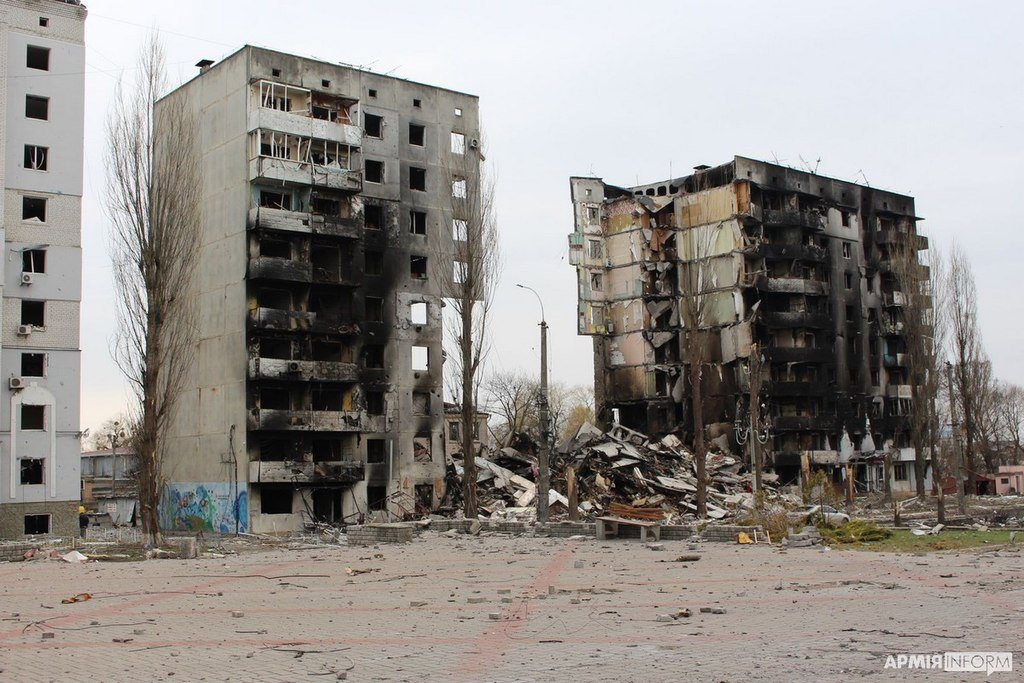Give Peace a Chance: The Post-Alaska Path to Ending the Russia-Ukraine War
Ukraine and its Western partners should do their best to explore whether the Alaska summit’s results can build momentum in the negotiations with Russia.
.jpg?sfvrsn=bfc31bfb_5)
Published by The Lawfare Institute
in Cooperation With

The Trump-Putin summit in Alaska has luckily not proved the worst fears of it repeating the Yalta or Munich great power deals, where territories and spheres of influence were carved out without the participation of the affected states. Indeed, right after the summit, President Trump briefed Ukrainian President Volodymyr Zelenskyy and the European counterparts about the talks with the Russians and said that now “it’s really up to President Zelenskyy to get [the deal] done.” Still, risks remain that Ukraine may be pressured to consider compromises that many Ukrainians see as unacceptable, including reported ideas of giving up control of the entire Donbas to Russia. However, the details reported in the media suggest that the summit also created some opportunities for Ukraine, including a chance of receiving security guarantees that the country has been seeking for a long time.
President Zelenskyy and several European leaders are scheduled to meet President Trump in the White House on Monday afternoon to discuss further course of action in the negotiations. It is imperative for all involved to get the most from the White House meeting and not to repeat the previous Oval Office fiasco. Although an unacceptable deal—especially one that is borderline capitulation—would be a disaster for Ukraine, no agreement at all would also constitute a bad outcome under the circumstances. Recent polls show that the majority of Ukrainians desire a negotiated end to the war but, at the same time, are not ready to capitulate to the Russian maximalist demands. The goal should be to come up with a negotiation strategy that would increase chances of an acceptable negotiated settlement and allow Ukraine to emerge from the war as an independent, secure, and prosperous democracy. Many argue that the chances of reaching an agreement are slim, but it is worth giving it a chance.
Ceasefire Versus a Peace Agreement
One of the main outcomes of the summit is President Trump’s change of heart about the need to reach a full ceasefire before negotiating a peace agreement. Instead, he said that “[it] was determined by all that the best way to end the [war] is to go directly to a Peace Agreement.” This constitutes a departure from a previous strategy of Ukraine and its Western partners to insist on the cessation of hostilities first, not to allow Russia to leverage its ongoing military offensive against Ukraine to extract concessions in the negotiations. Russia used a similar strategy of coercive diplomacy when it got Ukraine to sign the so-called Minsk agreements of 2014 and 2015 following the Ukrainian army’s defeats. The Russians have good reasons to think that the absence of military pressure on Ukraine this time around would significantly decrease their chances of achieving their goals in the negotiations. In other words, a mere ceasefire risks remaining just a ceasefire that does not address any of their demands, including what they call “root causes of the conflict.” Check out Anastasiia Lapatina’s Lawfare piece for the description of the Russian demands.
In light of the above, many journalists jumped to the conclusion that President Trump’s change of the ceasefire approach essentially meant his alignment with Russian President Vladimir Putin’s strategy. This is not that simple because the new strategy may also create opportunities for Ukraine. It’s important to remember that before the tense Trump-Zelenskyy Oval Office meeting in February, Ukraine conditioned any ceasefire or peace negotiations on receiving security guarantees from its Western partners. Indeed, back then, President Zelenskyy was warning that a fragile ceasefire without security guarantees “would only serve as another deception by Russia and a prelude to a new Russian war against Ukraine or other European nations.” Indeed, Zelenskyy’s strong insistence on the guarantees were reportedly one of the contributing causes of extremely tense U.S.-Ukraine relations earlier this year. However, following the Alaska summit, Trump reportedly warmed up toward U.S. participation in “‘Article 5’-style guarantee outside the NATO military alliance.” This may become a significant development for Ukraine because the previous ceasefire strategy risked leaving it with a fragile ceasefire and without the robust security framework in place.
If a pure ceasefire or armistice just suspends or terminates hostilities between the belligerents without addressing political questions, it is also possible to have a ceasefire or armistice with some or all political issues being addressed at least preliminarily. In such a fashion, to break the impasse in the Ukraine-Russia negotiations, some analysts suggested concluding a framework agreement that would outline the parameters of a future settlement. Such an approach would somewhat resemble the Minsk Agreements that provided for a ceasefire with a peace settlement road map. Another option is jumping right into negotiating a peace agreement, like Ukraine and Russia did in Istanbul in 2022, potentially having it provisionally applied—unless it is a nonbinding agreement—until the parties perform the required domestic procedures, including, for example, ratification in the parliaments.
The mentioned options would essentially involve the current process of fighting while talking, which is not a rare occurrence in peace negotiations. Indeed, for example, the Korean Armistice was negotiated in such a way. But that would require robust support from the Western partners, including sufficient supplies of weapons pending negotiations, so that Ukraine can hold the ground and avoid military setbacks that can water down its position in the talks, like happened with the Minsk Agreements.
In addition to the security guarantees, Ukraine can use the discussion of political questions to potentially link issues in negotiations to its benefit, making acceptable concessions in exchange for Russia withdrawing unacceptable demands. The territorial questions are a potential example of that.
Territorial Questions
In the course of the negotiations, Russia was demanding the recognition of its sovereignty over Crimea, the entire Donbas, Kherson, and Zaporizhzhia oblasts, including territories and administrative centers that it does not control. It also conditioned a full ceasefire on the withdrawal of Ukrainian forces from the respective territories under Ukrainian control. This obvious non-starter for Ukraine led many observers to question Russia’s seriousness in the negotiations. Russia’s recent slight softening in this respect, namely requesting the Ukrainian withdrawal only from Donbas without leaving the territories in the Kherson and Zaporizhzhia oblasts as a condition for the ceasefire, reportedly contributed to the Alaska summit taking place. This demand reportedly remains in place as a precondition for freezing the frontline in other locations, and Russia is potentially ready to vacate only smaller areas in Kharkiv and Sumy oblasts in exchange. President Zelenskyy rejected this demand because that would require Ukraine to leave the fortified areas, exposing its other oblasts to potential Russian attacks. It would also essentially mean the loss of home or the fate of Russian occupation for the local Ukrainians.
But there are still chances that Russia might drop this position and potentially official recognition demands during the negotiations, agreeing to cease the hostilities along the de facto line of contact. The earlier-mentioned linkage of political issues may be handy in this respect. Namely, as I suggested in my recent Lawfare piece, Ukraine and its Western partners can introduce the discussion of Ukraine’s potential non-bloc status or neutrality on the condition of Russia’s dropping its unreasonable territorial demands. There are chances that this may work for the following reasons. Although being important for Russia, the territorial questions have never been the key question for it, especially beyond Crimea. During the Minsk process before 2022 and during the Istanbul talks in 2022, Russia prioritized other issues, including Ukraine’s neutrality. Indeed, the 2022 Istanbul drafts on Ukraine’s permanent neutrality and security guarantees envisioned that the guarantees would apply to the Kherson and Zaporizhzhia oblasts, logically requiring the Russian withdrawal from these areas. Ukraine’s lead negotiator in those talks, David Arakhamia, said that neutrality “was the biggest thing for [the Russians]” in the 2022 talks. Obviously, many things have changed since 2022. But this proposition remains to be tested because Ukraine and the Europeans are still insisting on keeping Ukraine’s right to potentially join NATO in the future. As I explained in detail for Lawfare, Ukraine’s potential armed neutrality or nonalignment can ensure Ukraine’s security given robust Western security obligations, while providing Russia certain strategic benefits, including denial of Ukraine’s territory to NATO. If faced with risks of increasing military and economic pressure, Russia might decide to pocket these strategic benefits rather than pursuing its imperial dream of subjecting Ukraine that may result in a worse outcome after many years of war. But considering these imperial motives, the strong security arrangement for Ukraine, including it keeping robust armed forces, will be critical.
Security Arrangement
The good news for Ukraine from the Alaska summit is a reported consensus of Trump and Putin that Ukraine can get a security guarantee outside NATO similar to the wording of its Article 5. If true, this confirms my earlier reasoning that the Trump administration may consider participating in the security guarantees for Ukraine, especially if Russia agrees to them.
Although exact details are not clear, such a guarantee sounds similar to one Ukraine and Russia discussed in Istanbul in 2022. The last draft treaty exchanged between the parties then contained relevant Article 5:
The Guarantor States and Ukraine agree that in the event of an armed attack on Ukraine, each of the Guarantor States, after holding urgent and immediate consultations (which shall be held within no more than three days) among them, in the exercise of the right to individual or collective self-defense recognized by Article 51 of the Charter of the United Nations, [Russian revision: on the basis of a decision agreed upon by all Guarantor States], will provide (in response to and on the basis of an official request from Ukraine) assistance to Ukraine, as a permanently neutral state under attack, by immediately taking such individual or joint action as may be necessary, [Ukraine revision: including closing the airspace over Ukraine, the provision of the necessary weapons], using armed force in order to restore and subsequently maintain the security of Ukraine as a permanently neutral state.
However, Russia wanted the veto over the guarantees back then, which would nullify their security value for Ukraine. It remains to be seen whether it will drop this demand if the negotiations in this respect proceed, but that needs to be one of the principled demands from Ukraine and its Western partners. Also, in Istanbul, Russia was agreeing to such a guarantee in principle subject to Ukraine’s permanent neutrality—something it has been insisting on in the current negotiations as well.
Although such a guarantee would be very useful for Ukraine, as history shows, including the famous German violation of Belgium neutrality during World War I despite the guarantees of the latter’s neutrality, no security guarantee can fully guarantee a country’s security. There are always risks that the guarantors may defect when push comes to shove or be late in their response. For these reasons, the security guarantee needs to be complemented with robust Ukrainian defense and deterrence capabilities and an indigenous defense industry. Russia has been demanding unacceptable limitations on the relevant capabilities of Ukraine and its existential defense cooperation with the West. As I explained in detail in prior Lawfare pieces, Ukraine and its Western partners need to preserve a strong Ukrainian army capable of fending off any future aggression as a sine qua non of any settlement. That would require significant support from the West in peacetime. The 2024 bilateral security agreements Ukraine concluded with its Western partners, including the United States, can become an important tool in ensuring predictable long-term support in this respect. However, they need to be strengthened significantly, including providing for detailed criteria and numbers of support akin to a U.S.-Israel security arrangement, and being ratified by the partners’ parliaments to make the promises of support credible. As I suggested in a recent Lawfare piece, these very security agreements can also incorporate security guarantees, establish Ukraine’s neutrality or nonalignment, and be endorsed by the UN Security Council or General Assembly. The robust security arrangement along these lines can convince the majority of Ukrainians that their country has a chance for safe and durable peace, making them support the settlement. This, in turn, can significantly contribute to the durability of any agreements.
***
There are obviously a number of other important issues that need to be addressed, including Russian reparations to Ukraine. But effectively addressing the above-mentioned issues, including during tomorrow’s White House meeting, may bring a negotiated settlement much closer, giving peace a chance.





